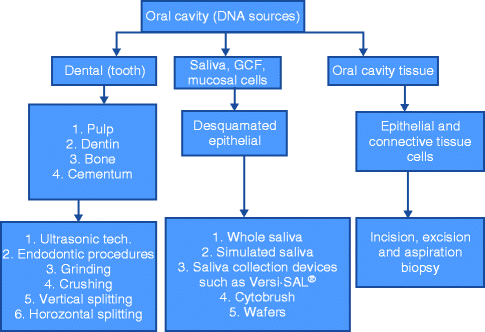and Jasdeep Kaur1
(1)
Earth and Life Sciences Vrije Universiteit Amsterdam and ILEWG, Amsterdam, The Netherlands
Abstract
Teeth are among the hardest structures of the human body as well as resistant to adverse condition, so they are used as an identification tool in forensic odontology investigations. They are also a valuable source of DNA, as other parts of the body are destroyed or degraded in mass disasters. This chapter focuses on the role of DNA technology in forensic odontology.
17.1 Introduction
The well-known significance of forensic dentistry for human identification, mainly when there is little remaining material to perform such identification (e.g., in fires, explosions, decomposing bodies or skeletonized bodies), has led forensic odontology investigators to become more familiar with advanced molecular biology technologies. Mass disaster victim identification traditionally relies on the teamwork of different experts, such as police, forensic odontologists, physicians, and pathologists, where antemortem information from the missing persons is compared with postmortem data of the deceased persons (Olaisen et al. 1997). In most cases, forensic odontology investigations may fail due to a lack of proper antemortem records (Pretty 2007). If antemortem data are unavailable, then the precise identification becomes complicated, and only DNA profiling systems can expose the exact identity of a person. Because of the resistant nature of dental tissues to environmental assaults, such as incineration, immersion, trauma, mutilation, and decomposition, teeth represent an excellent source of DNA material (Schwartz et al. 1991; Rai et al. 2004). The DNA extracted from the teeth of an unidentified individual will be compared with DNA isolated from known antemortem samples, such as stored blood, toothbrush, hairbrush, clothing, collection of buccal cells with help of DNA-SAL™, cervical smear, biopsy, or DNA of a parent or sibling (Sweet and DiZinno 1996).


Fig. 17.1
Orodental source of DNA
17.2 Guidelines for Obtaining Dental DNA
The following guidelines outline how to obtain dental DNA:
1.
Determine if any soft tissue or blood is adherent to the tooth that should be sampled.
2.
Debride that tooth of any plaque or calculus with a curette, and wash thoroughly with hydrogen peroxide followed by ethanol.
3.
If the tooth is intact and is supposed to have been removed from the alveolus recently, a conventional endodontic access and instrumentation can be performed.
4.
Sectioning the tooth provides greater access to pulp.
5.
Once the tooth is opened, the walls of the pulp chamber can be curetted or instrumented with a slow rotary burr. Then pulp tissue can be collected in a wide open sterile tube.
6.
In case of dried specimens, the pulp may be mummified parchment-like. After instrumentation, the chamber is best irrigated with buffer. Subsequent ultrafiltration of the liquid at the lab will remove the cellular material needed for analysis.
17.3 Source of DNA (Fig. 17.1)
17.3.1 DNA from Teeth
Teeth are acknowledged to survive most postmortem events, including natural phenomena such as decomposition and autolysis, as well as environmental insults, such as water immersion, burial, and fires to as hot as 1,100°C (Schwartz et al. 1991; Rai et al. 2004). In the tooth, dentin and pulp are rich sources of DNA, which can be successfully extracted (Shiroma et al. 2004; Sweet and Sweet 1995). It has been evident that a sufficient quantity of DNA can be extracted from the crown body, root body, and root tip, although the root body is the region that yields the highest quantities of DNA (Gaytmenn and Sweet 2003). Tsuchimochi et al. (2002) analyzed the Chelex 100 chelating resin to extract DNA from the dental pulp for subsequent application on PCR analysis. They found that extraction of DNA from the dental pulp using this resin is appropriate for obtaining high-quality DNA samples for PCR amplification (Tsuchimochi et al. 2002). The pulp created the strongest PCR amplification signals, while dentin and cementum signals were very similar to each other (Malaver and Yunis 2003). In another study, a DNA profile was obtained in four of five tested samples composed of 250 μl of saliva deposited on the skin (Anzai et al. 2005).
Stay updated, free dental videos. Join our Telegram channel

VIDEdental - Online dental courses


